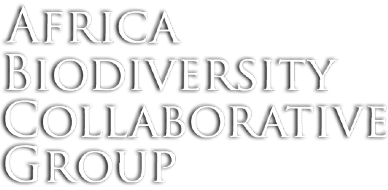This brief is authored by Micha Hollestelle (Advisor to Gabon Mining, ZAGA Consultancy), Asher Sarah Smith (Estelle Levin, Ltd.) and Kirsten Hund (formerly WWF). Conservation efforts in DRC are severely affected by critically poor governance and the environmental impacts of uncontrolled artisanal mining of minerals often linked with rebel groups and criminal networks. As such, mineral resources are believed to be a driver of the on-going lawlessness in key conservation zones leading to unequalled depletion of biodiversity. Yet, while leading developmental NGOs and donors have embraced the issue, conservation NGOs have seemingly steered clear of the issue. The authors argue that doing so is at the peril of the unique wildlife and plant species found in DRC. This policy brief sheds light on the various issues to be tackled: direct environmental impact, poaching and other indirect impacts, criminal networks, and legality and enforcement.
The World Bank describes the DRCs ASM sector as the most important segment of the mining sector and estimates 10 million people, or 16% of the DRCs population, either mine directly or are dependent on artisanal mining for their livelihood and the number of people seeking to work in this sector is expected to rise dramatically over the next ten years (World Bank, 2008). Artisanal and small-scale mining has been operating in protected areas with little to no government control for decades, resulting in significant damage to wildlife and biodiversity in these areas. ASM currently takes place in about 40% of DRCs protected areas and is increasing in prevalence (IUCN, 2010). Scrambling for resources, miners and their families rely on their natural surroundings for their sur-vival, e.g. by hunting, fishing and logging. With mining camps often situated deep in the forest, and contributing to the organization of transport links between these camps and the outside world, a poaching problem becomes inevitable for meeting subsistence needs through bushmeat or for commercial gain, such as with the illegal ivory trade.
Without question, the involvement of armed groups in the mineral supply chain originating from protected areas is a critical factor in determining the feasibility of future engagement by conservation organizations as the tragic recent events in Epulu underline. By broadening the discussion from armed conflict alone to threats to human security including depletion of natural resources, a more holistic picture emerges revealing links between conservation, development, artisanal and large scale mining (ASM & LSM), and conflict. These links need to be untangled and cohesively addressed before proper management of protected areas can evolve in earnest. TRAFFIC, the wildlife trade monitoring network, aims at curbing illegal wildlife trade and has acknowledged these critical links. WWF-US has voiced its ambition to enhance knowledge on the fact and workings of the intertwined criminal networks which sustain illegal mining and trade while also supporting poaching and the ivory trade. Conservation organizations should consider joining this initiative by adding their field-based knowledge and thus providing a conservation perspective to the vast amount of existing experience, policy and literature on illegal and conflict-related trade. These perspectives are still lacking. For instance, no study dedicated solely to the correlation between small arms proliferation and poaching exists.
In conclusion, one of the major issues that binds development and conservation is rule of law, and law enforcement. As the overwhelming amount of artisanal mining outside of official artisanal mining zones and inside of national protected areas demonstrates, further efforts to enforce national laws are futile until those institutions involved in upholding the law and in punishing perpetrators are under-capacitated at best or downright criminal at worst.


Add a Comment